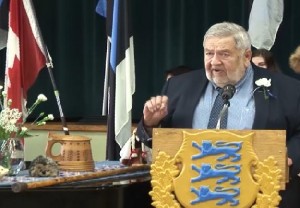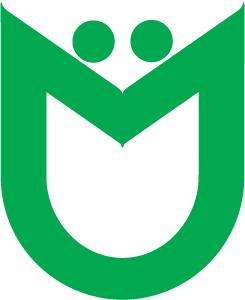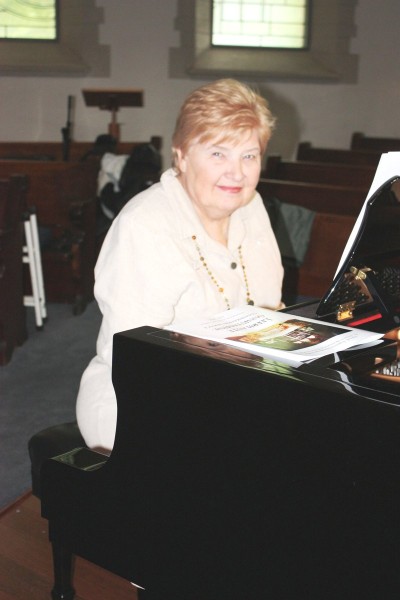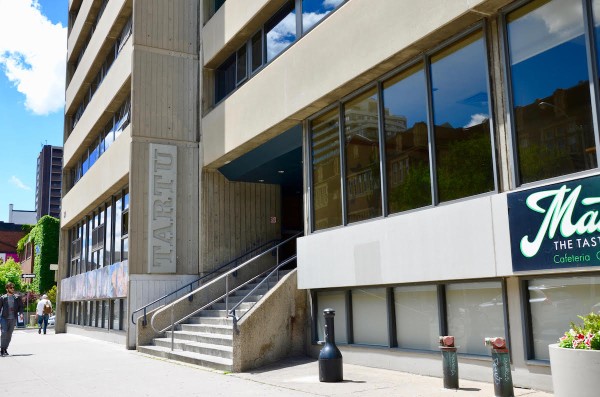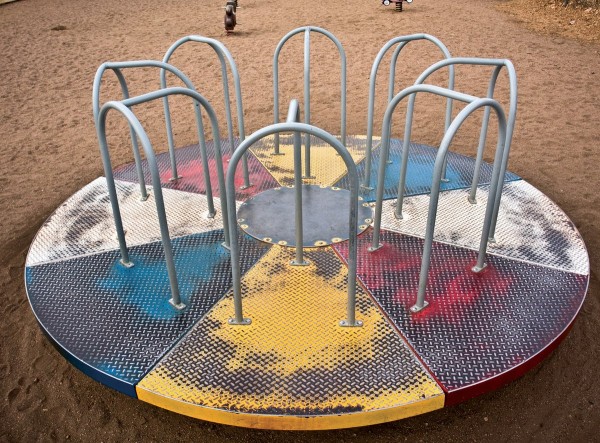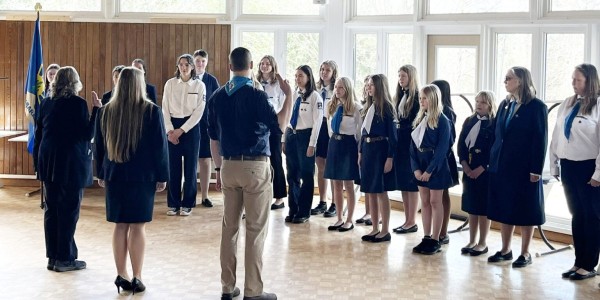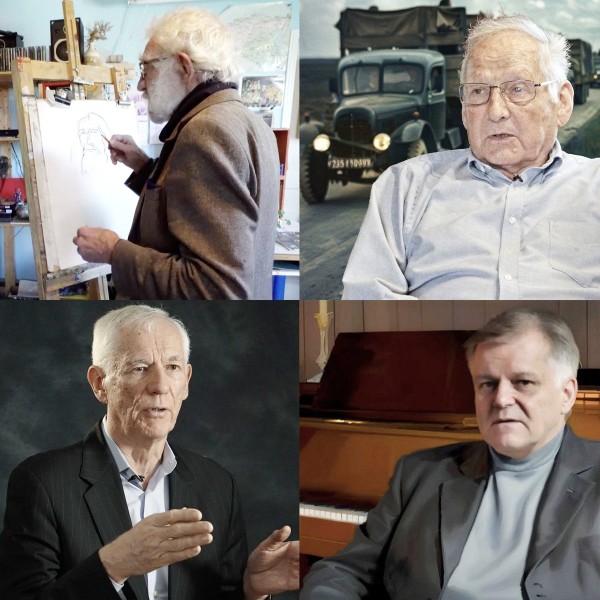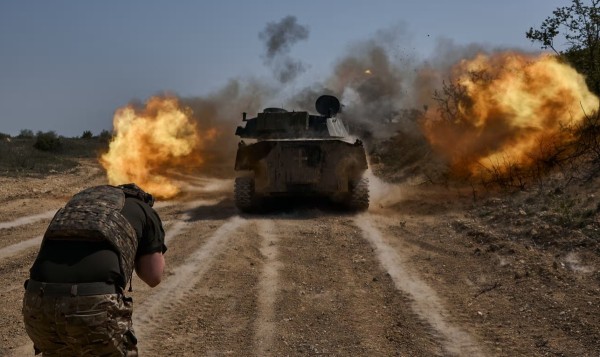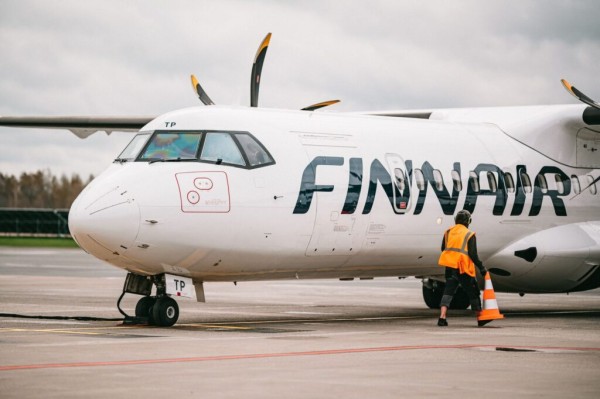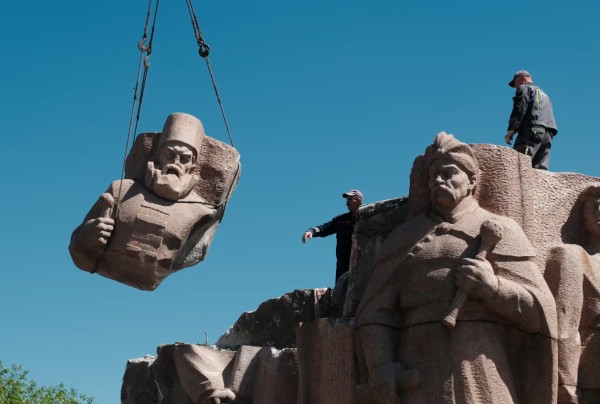For years Putin has staged the annual Victory Day Parade as a theatrical spectacle showcasing Russia’s menacing might. It was a formidable arsenal that Russia showcased last year, rolling out Soviet WWII era T-34 tanks, flying 76 fighter jets and helicopters and displaying a RS-24 ballistic missile, accompanied by thousands of goose-stepping soldiers passing by a dais filled with medal-festooned generals in Red Square.
Commemorating the surrender of Nazi Germany, Victory Day, a well-scripted Kremlin production is the most celebratory holiday for the public. The focus was deliberately shifted from mourning the millions of Russian casualties in WWII to getting a day off work for extolling military power and glory.
The orange and black ribbon, derived from the Order of Saint George, and distributed in the millions to Russians throughout the world for May 9th, now articulates Russian battlefield prowess.
The medal was the highest battlefield award in imperial Russia and the colours represent fire and gunpowder. Russian nationalists were wearing the ribbon when the Estonian government announced it would relocate a Red Army monument from Tallinn’s centre to a military cemetery in 2007. A Russian journalist has observed that rioters at the time wore the ribbon as a “symbol of concrete political partiality and views, not just memory”. It was worn in 2014 during the Russian invasion of Ukraine’s Donbas, as a “symbol of the state and loyalty to the autocratic regime”.
Only two months after the 2021 Victory Day march, an article purportedly authored by Putin, “On the Historical Unity of Russians and Ukrainians” was published, spelling out his denial of Ukraine as a separate country.
Victory Day is Putin’s perfect platform for nationalistic propaganda, which is now devoid of any real historic context. It has been twisted into a “day of liberation” which the captive nations of central and eastern Europe marked as the day that inaugurated Soviet control and repression.
(Pikemalt saab lugeda Eesti Elu 22. aprilli 2022 paber- ja PDF/digilehest)

Laas Leivat: The Russian May 9th: one of victory or shame? (1)
Eestlased Kanadas | 22 Apr 2022 | Eesti Elu
Viimased kommentaarid
Kommentaarid on kirjutatud EWR lugejate poolt. Nende sisu ei pruugi ühtida EWR toimetuse seisukohtadega.
https://en.wikipedia.org/wiki/...
https://en.wikipedia.org/wiki/...
Date: 5 July 1943 – 23 August 1943
https://en.wikipedia.org/wiki/...
Date: 9 July – 17 August 1943
https://en.wikipedia.org/wiki/...
Date: 5 July 1943 – 23 August 1943
https://en.wikipedia.org/wiki/...
Date: 9 July – 17 August 1943
Eestlased Kanadas
TRENDING






